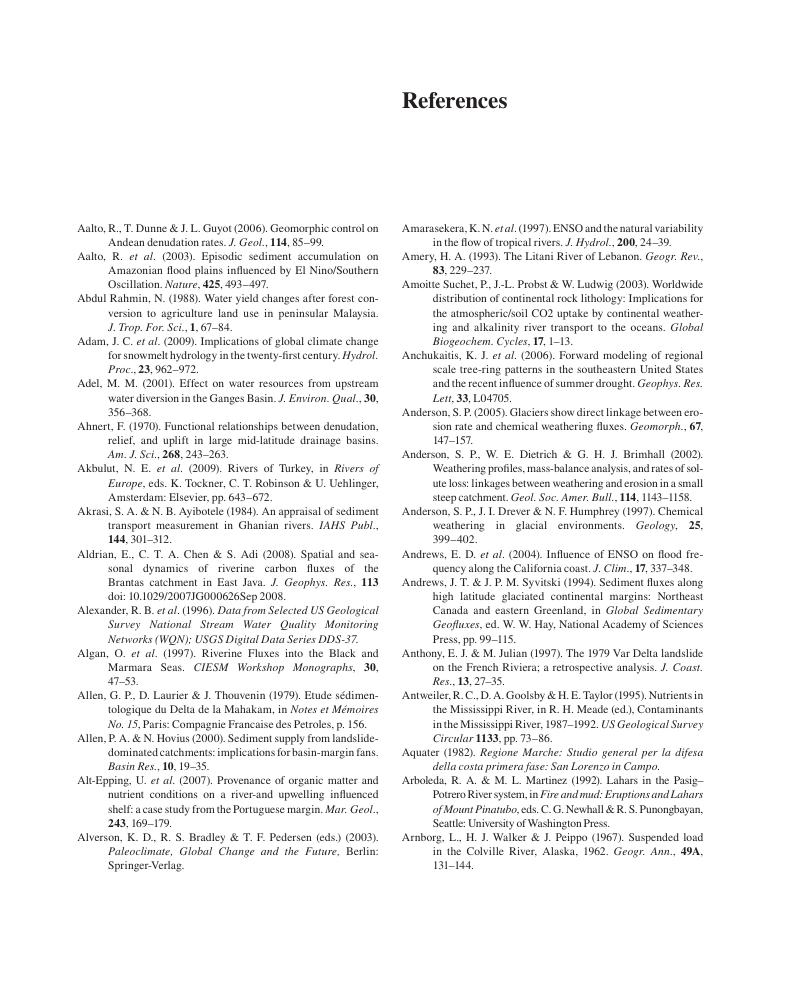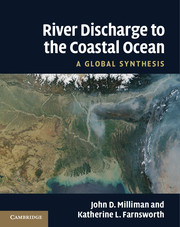Book contents
- Frontmatter
- Contents
- Foreword
- 1 Introduction
- 2 Runoff, erosion, and delivery to the coastal ocean
- 3 Temporal variations
- 4 Human activities and their impacts
- Appendices. Global river data base
- Appendix A North and Central America
- Appendix B South America
- Appendix C Europe
- Appendix D Africa
- Appendix E Eurasia
- Appendix F Asia
- Appendix G Oceania
- References
- Indexes
- References
References
Published online by Cambridge University Press: 03 May 2011
- Frontmatter
- Contents
- Foreword
- 1 Introduction
- 2 Runoff, erosion, and delivery to the coastal ocean
- 3 Temporal variations
- 4 Human activities and their impacts
- Appendices. Global river data base
- Appendix A North and Central America
- Appendix B South America
- Appendix C Europe
- Appendix D Africa
- Appendix E Eurasia
- Appendix F Asia
- Appendix G Oceania
- References
- Indexes
- References
Summary

- Type
- Chapter
- Information
- River Discharge to the Coastal OceanA Global Synthesis, pp. 333 - 366Publisher: Cambridge University PressPrint publication year: 2011



